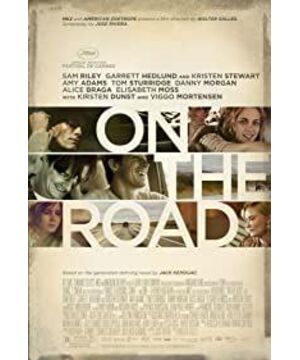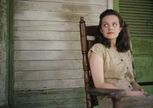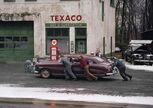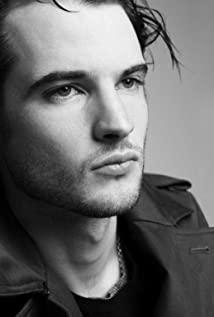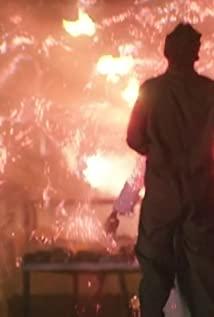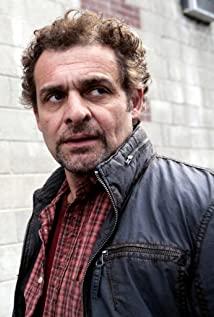65th Cannes Film Festival (2012) Main competition unit - Palme d' Or Bringing "On the Road" to the screen has been a long-term endeavor. In 1957, when the novel was first published six years after its creation, Kerouac wrote a one-page letter to Marlon Brando, asking him to star in the novel from "On the Road." Adapted film. He gave Brando the role of Moriarty, while Kerouac himself would play Peredes. In that letter, Kerouac said he planned to make the film an experimental film. "Set up the camera in the front seat and shoot everything on the road day and night." Brando never responded to the letter. Later, Warners offered $110,000 for the film rights to "On the Road," but Kerouac's assistant, Sterling Lord, turned it down. He sold the rights to Paramount for $150,000. Paramount also wanted Brando to appear, but that never happened.
In 1979, director Francis Ford Coppola bought the rights to On the Road. Over the next many years, he hired a number of well-known screenwriters, including famous Michael Hull and Barry Jefford, to revise his novels into screenplays for him. But none of this entered Capola's eyes. Later, Coppola tried screenwriting with his son Roman Coppola, but there was still no result. In 1995, Coppola was going to shoot the film into a 16mm black-and-white film, and hired the poet Allen Ginsburg to audition with him, but the project eventually fell apart. Coppola said: "I've tried to come and write the script, but it's been a failure, I don't know how to adapt the novel. It's a period drama, it's going to be 1950. The sets and art are expensive. "A few years later, Coppola had hoped to make a film with Ethan Hawke and Brad Pitt, but it didn't happen. In 2001, he found novelist Russell Banks to revise the script, and hired Joe Schumacher to guide, but this was still unsuccessful.
"Motorcycle Diary" was born
In 2004, Coppola saw a movie called "Motorcycle Diary", and he suddenly found that he had found a suitable candidate for "On the Road". After reading novels and screenplays, Walter Sellers, who filmed business cards such as "The Motorcycle Diaries", "Grand Central Station" and "Offside", was fascinated. He said: "This novel is about people wanting to use their own struggles to force their way into a world that seems impregnable. I want to show the collision of a generation and the whole world in the film." During the course of the film, Walter Sellers did a lot of research and investigation, and filmed this preparatory work into a documentary called Searching for On the Road. In this documentary, he re-walked the road through the United States depicted in "On the Road", used himself as the protagonist of the novel to experience the character's psychology, and also interviewed Kerouac to gain an in-depth understanding of that time. American youth psychology.
Coppola put the film in his own production company, American Zoetrope, and received support from many well-known producers, such as MK2, British Film Channel 4, French Film Channel 2, Canal+, etc. . In the end, Coppola raised $25 million in production costs for the film. Just three months before the filming began, the entire crew had three weeks of preparatory work, mainly getting together to study Beat Generation literature and Kerouac's life story. Leading their study was Kerouac researcher Jared Nicosia. Nicosia played a 1978 video of him interviewing Lou Anne Henderson, wife of Neil Cassetti and Marillo's in "On the Road," for this study. prototype.
The painstaking filming process
The film, which has been in the making since the 1950s, finally began filming on August 4, 2010. The filming process was obviously a little unsatisfactory, because in today's society, it is rare to find the roads and buildings that felt like back then. The filming of the film was very intermittent, first in Montreal, then moved to Quebec; 2 months later, in Alberta, Canada, for 5 days. Then the whole crew went to Mexico and New Orleans for some shots. Later, some additional shots were shot in San Francisco. After the tossing and turning of the main camera work, the crew brought Garrett Hedlund to Argentina and Chile, where Garrett Hedlund was shot in a 1949 Hudson. Footage of the Wasp car traveling through mountains and snowy peaks. Without a doubt, the snow-capped mountains that will appear in the film are the Andes. Garrett Hedlund said: "The film was shot like a guerrilla, we were always on the road, always ready to go. A lot of the time, there weren't a lot of people on the set. It was a kind of It's a strange experience." Because the crew was so small, photographer Eric Gautier didn't bring much heavy equipment. Many scenes were shot with handheld cameras. He used handheld photography when shooting Garrett Hedlund in the Andes. It is worth mentioning that in this shot, the director Walter Sellers himself was operating the camera. He was sitting in the co-pilot seat operating the camera, and another camera was mounted outside the car.
The film has a very good cast of Sam Riley, Kristen Stewart, Kirsten Dunst, Viggo Mortensen, Amy Adams and Steve Buscemi. The biggest names are involved. There is no doubt that this is the charm of "On the Road", but also the appeal of Francis Ford Coppola, who participated in this film as a producer. Director Walter Sellers from South America said: "I have an indescribable reverence for the young people of that era, and for their behavior, I very much agree. The actors in the film, there is no doubt that They have really demonstrated their ability to shape characters, and they have brought the stories and spirit of the novels to the real world. It is definitely my luck to work with this group of people, as well as Coppola.”
◎ Trivia
Jack Kerouac's masterpiece "On the Road" is regarded as the founding work of the "Beat Generation".
· In 1979, director Francis Ford Coppola bought the rights to "On the Road". But the shooting never took off.
· In 2004, Coppola saw a movie called "Motorcycle Diaries", he suddenly found that he had found a suitable candidate for "On the Road", and finally selected the film director Walter Sellers to direct the film .
· Gus Van Sant was expected to direct the film.
View more about On the Road reviews


